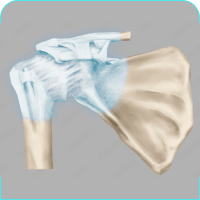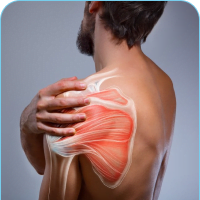Shoulder Pain
Mobility has its price, however. It may lead to increasing problems with instability or impingement of the soft tissue or bony structures in your shoulder, resulting in pain. You may feel pain only when you move your shoulder, or all of the time. The pain may be temporary or it may continue and require medical diagnosis and treatment. At Alleviate our expert staff take an integrative approach to diagnosing and Left/Right Shoulder pain treatment without surgery to help get you on a personalized path to relieving your pain. We encourage you to contact us to find relief today for Pain in the front of shoulder, Left/ Right shoulder pain treatment, Shoulder pain treatment without surgery. Below is a list of Shoulder Conditions treated at Alleviate. Discover the non-surgical treatment options available to getting you back on track. Don’t see a condition listed? Contact us using the form on the right to see how we can help you.

Anatomy of the Shoulder

The acromioclavicular joint is where the acromion, part of the shoulder blade (scapula) and the collar bone (clavicle) meet. The glenohumeral joint is where the ball (humeral head) and the socket (the glenoid) meet.
The rotator cuff connects the humerus to the scapula and is made up of the tendons of four muscles, the supraspinatus, infraspinatus, teres minor and the subscapularis. Tendons attach muscle to bone. Muscles in turn move bones by pulling on the tendons. The muscles of the rotator cuff keep the humerus tightly in the socket.
The socket, or the glenoid, is shallow and flat. It is rimmed with soft tissue called the labrum that makes a deeper socket that molds to fit the humeral head. The joint capsule surrounds the shoulder joint. It is a fluid filled sac that lubricates the joint. It is made up of ligaments. Ligaments are soft tissue that holds bone to bone. Shoulder injuries can occur to any part of the shoulder.






